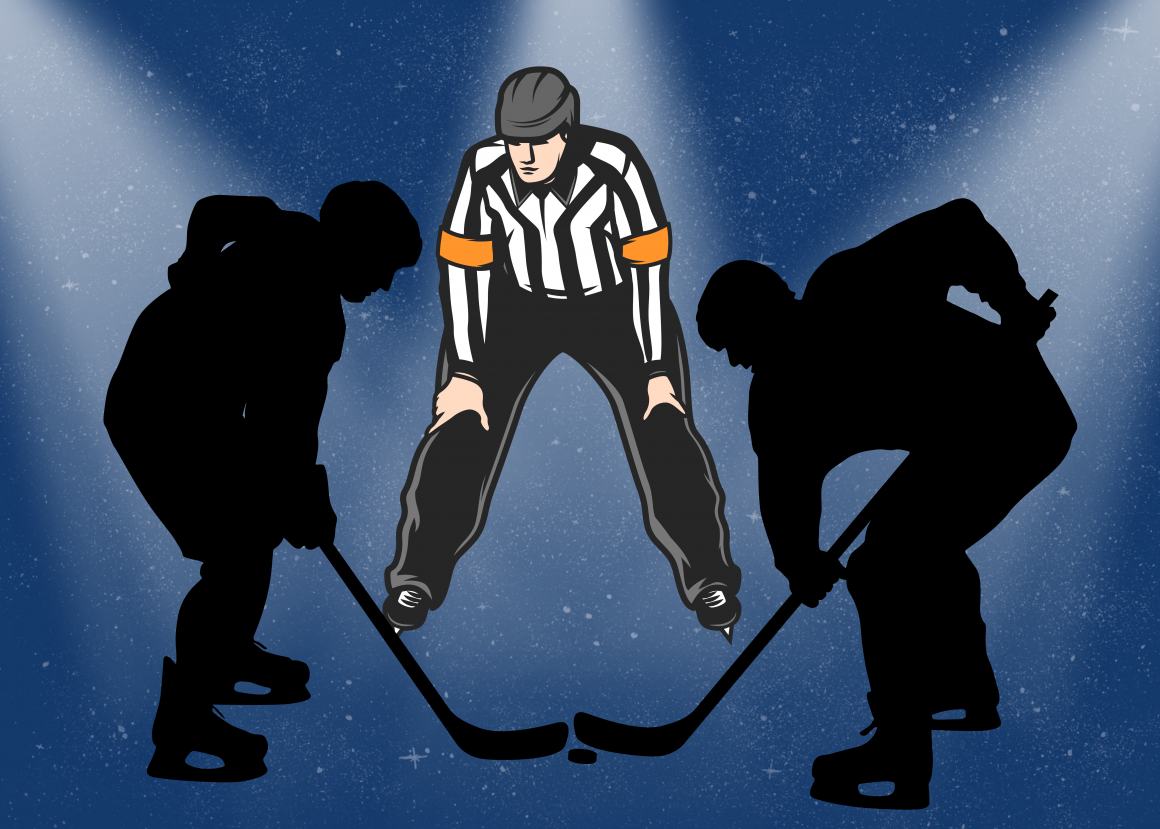
For starters #9: A guide to referee’s hand signals at ice hockey games
By Hailey Schopper, February 13 2024—
So you want to be a referee? Or maybe you just want to understand what they are talking about when you watch a hockey game. Either way, you’re in the right place. Once you’re done with this article you’ll know exactly what some common penalties mean and what the referee is doing with their hands when said penalties are called.
Before we dive into penalties, there are two other important, and extremely common, calls on the ice that you should definitely know. Those calls are known as offsides and icings.
An offside is super common and important because it halts play. It occurs when a player crosses the blueline into an opposing team’s zone before the puck does. Referees raise their non-whistle arm until either the call is nullified or until the team who committed the offence touches the puck and a whistle is blown.
An icing call occurs when a player on their side of the red line shoots the puck all the way down into the opposing team’s zone and no other player touches it. The referee signals this through a fully extended arm over their head, only lowering it when another referee blows the whistle stopping play.
It is also important to discuss some minor penalties, these are infractions against a player that leads them to spend two minutes in the penalty box. This article will focus on three common infractions: cross-checking, high-sticking and tripping.
Cross-checking happens when a player shoves — or “checks” — an opponent with their stick, held between two hands. This call can also be upgraded to a major penalty based on the situation, so keep your eye out for that. Referees signal this call by extending their arms straight out from the chest by about a foot in a forward and backward motion of both arms with their fists clenched.
High-sticking occurs when a player lifts their stick above their shoulders whether they strike another player or not. This is signalled by clenching both fists and holding one at chest height and the other at forehead height.
Tripping occurs when one player puts their body or stick in the way of another player causing them to fall, or as the name suggests, trip. Referees signal this by striking their leg below the knee with either hand.
Now onto the major penalties which result in a four, five or even ten-minute penalty. Two common examples of major infractions are: charging and kneeing.
Charging is essentially when a player uses excessive force to check a player into the boards, goal frame, or open ice. Referees signal this by rotating their clenched fists around one another in front of their chests.
Kneeing occurs when one player makes contact with an opposing player and the knee is the main point of contact. This is signalled by referees through slapping either of their knees with an open hand.
That sums up the common calls and signals on the ice you will see when you go to your next hockey game.
